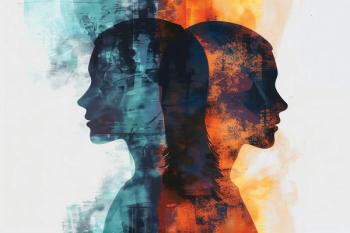
Looking Back While Thinking Ahead
The DSM-5 looms, prompting mental health professionals, clients, and caretakers to look ahead with a mixture of eagerness, dread, and bewilderment. As we look at the state of things now and project forward toward possibilities for the future, it pays to also look back into the past.
The DSM-5 looms, prompting mental health professionals, clients, and caretakers to look ahead with a mixture of eagerness, dread, and bewilderment. With so much at stake, the reactions are hardly surprising in communities all too familiar with the peculiar challenges posed by mental illnesses and their treatment. As we look at the state of things now and project forward toward possibilities for the future, it pays to also look back into the past.
Admittedly, this is a self-serving statement on my part. As an historian, it’s my job to study and teach about the past, so I am predisposed to taking it seriously. That said, I don’t adopt the view that the past is necessarily a reliable guide for planning the future. And most of us historians are hardly equipped to be advising decision-makers on setting policy. (As a colleague of mine once put it, the motto of all historians should be, “Historians – solving yesterday’s problems today!”) But especially at a time when the ethos of innovation and reform compels us to keep pressing forward, history might well play a much needed role in steering us clear of what philosophers have called “bad faith” (mauvaise foi), by pointing out the choices that have been made – and not made – in creating the conditions of possibility existing at this point in time.
For over a decade, I have taught a course on the history of madness, mental illness, and psychiatry in the Western world, in which I assign primary source readings and images from ancient times to the present. After years of distributing photocopies and placing books on reserve at the library – an English-language sourcebook in this area had not been published in around 25 years – I went about the job of putting together an anthology. All told, it took about three years, and the book was published this past winter under the title
So, what do I take away from the experience of reading, re-reading, and selecting texts across 3000 years of history? Some thoughts…
• While it appears that every society has recognized the existence of something that we today refer to as mental illness, the form, substance, and public perception of that experience have differed considerably over time. Yes, ancient and medieval notions of frenzy, mania, and melancholy might sound as if they map neatly onto our psychiatric categories today. But to see them as mere precursors to our present-day understanding neglects how anchored they were in the thinking, practices, and social relations of their time. Our rubrics of “mental illness” and “mental disorders” would make little sense to historical actors who conceived of “madness” as simultaneously somatic and metaphysical in nature. As the philosopher Ian Hacking has recently put it, psychiatric symptoms – and, I might add, psychiatric ideas – find stable homes at a given place and time, in what he refers to as “ecological niches.” This should give pause to anyone attempting to use historical sources in epidemiological research.
• The story of the West’s historical encounter with madness is difficult to plot out as one of ever-advancing progress. For centuries, contemporary observers have regularly complained about how ineffective cures have been. And since the late-eighteenth century, many have held the view that mental illness has become more, not less, prevalent with the passage of time. In addition, it has not escaped the notice of clinicians, scholars, and the lay public that some of what we today might consider among the most ethically questionable forms of treatment – for instance, malaria fever therapy, insulin coma therapy, lobotomy, sterilization, and “euthanasia” – were invented and applied only in recent times.
• That said, those who see the history of madness and psychiatry as a story of pseudoscience, abuse, and social control, choose to ignore the good faith and often successful efforts that have been made in comprehending and alleviating the human misery associated with mental illness. Clinicians, caretakers, policymakers, philosophers, theologians, novelists, journalists, and, most especially, the afflicted themselves – a wide array of professionals and laypeople - have wrestled with making sense of madness as a human predicament. In this, they frequently have shown insight and compassion.
• More than anything else, I have been struck by this: at its heart, madness has consistently been an existential matter, meaning that it prompts us to pose fundamental questions about who we are, what makes us human, what constitutes a good life, and the degree to which we are the authors of that life. Studying the history of mental disorder, then, does not only mean studying deviant or dysfunctional ways of perceiving, thinking, and acting. Rather, it is also an exercise in self-exploration, a way of holding up a mirror to ourselves and seeing how human beings have valued their bodies, minds, and souls. As the debate surrounding the recently circulated draft reveals, the DSM is not simply a clinical manual, then, but also a reflection of the often contentious ways we all see (and wish to see) ourselves.
History rarely, if ever, offers clear lessons for addressing complex social problems. But perhaps it can be of service in this one way. The study of history can remind us that we, like our predecessors, are creatures of our own ecological niches, and, in doing so, it may help us temper our enthusiasm and ambition with a measure of humility.
Newsletter
Receive trusted psychiatric news, expert analysis, and clinical insights — subscribe today to support your practice and your patients.

















